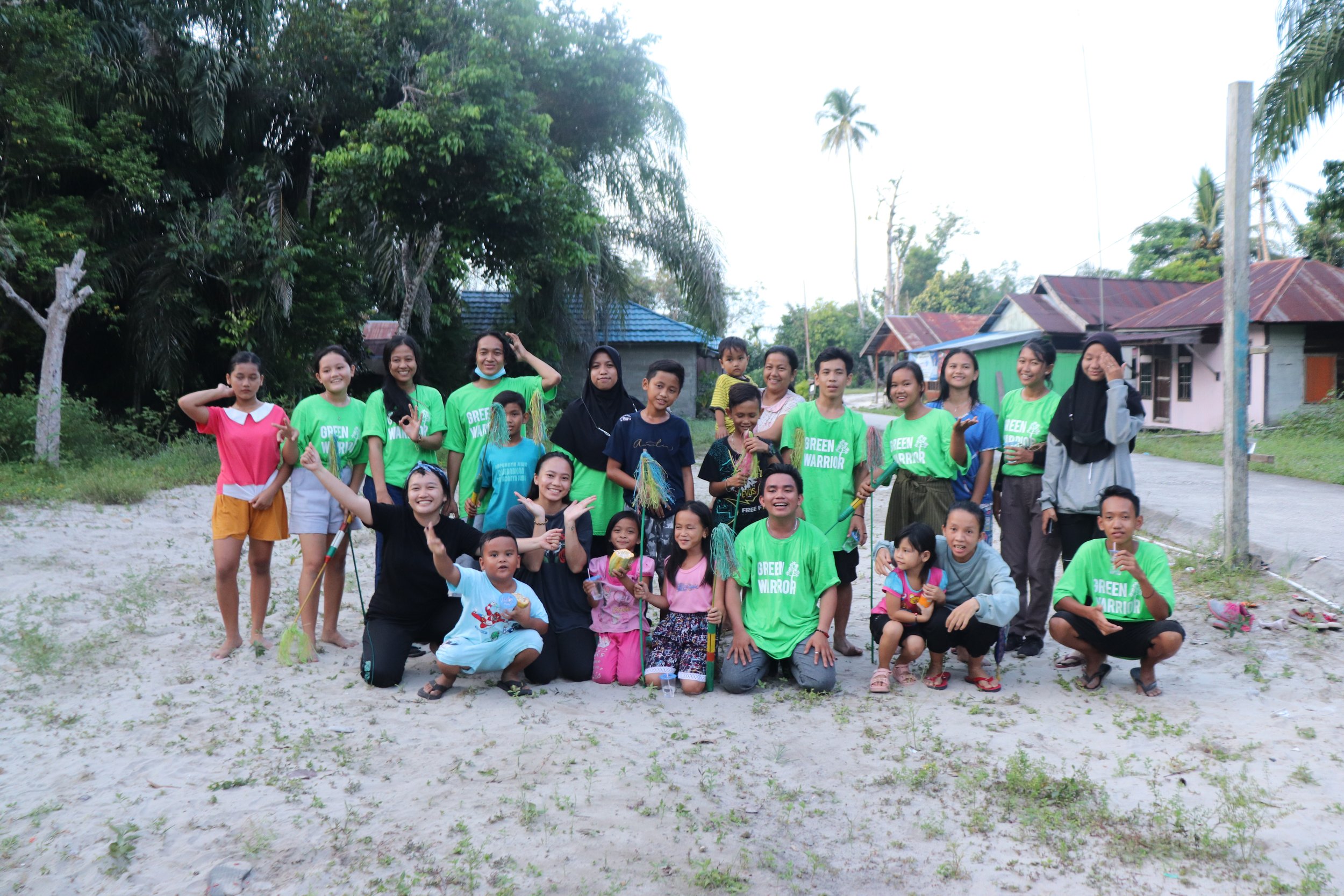On a sunny morning in mid-October, our team gathered in our headquarters to prepare for the long journey of the third generation of Kalimantan Green Warrior to live-in several Indigenous communities. Only five selected warriors who finished all their missions in the previous stage can join this journey and have the opportunity to enjoy the life of traditional villages and connect to Indigenous elders. Mayang, Nisa, Daud, Nida, and Baley were the five selected warriors, and this is the story of their journey.
Their journey started a few weeks earlier when they received recommendations from the Green Warrior alumni batch 1 and 2 to join the first selection stage of this green leadership program. Seventeen Kalimantan youths successfully passed the first selection and became part of the Green Warriors. The first mission for the Green Warriors generation 3 was restoring burned peatland in the Tangkiling area, located in PalangkaRaya city. The area experienced a severe fire in 2015 and burned many ancient tree species. We traveled to the location by motorbike for one hour through small sandy roads and forests that have started to green again. After we arrived, we immediately set up a tent, cleaned the plot area, and made wooden pegs. Because the condition of the location is dry and hot, we chose the plantation area near a small river to ensure the tree that we planted can grow and strive. We planted twenty different endemic peatlands tree species to protect and preserve the local tree species.
After we planted trees, we explored the peat swamp forest to learn about the characteristics of this unique ecosystem, including its water, soil, and species. This area is squeezed by oil palm plantations on the south side and sengon plantations on the west side. Fortunately, the plantation supervisor allowed us to explore their plantation areas and help us to delve deeper into these three different ecosystems.
In the first mission, Mayang, Nisa, Daud, Nida, and Baley, had shown prominent leadership, a sense of responsibility, and a passion for the environment out of 17 other participants. Thus, they were able to take part in the next mission to stay in two Indigenous Dayak Ma'ayan communities in the East and South Barito Regency and join their grassroots restorations movement.
The first village we visited was Pulau Patai village in East Barito. This village is a remote village that still adheres to Dayak customs and culture. It takes 8 hours to travel by car through many potholed roads. Arriving at Pulau Patai village, the elders warmly welcomed us by performing the Tampung Tawar Ritual, a welcoming ritual that aims to rid oneself of evil spirits or bad things that follow guests.
We then continued our trip to the planting side with the villagers using a small boat. While peddling the wooden boat, we were mesmerized by the beautiful view of the village, big and shady trees growing proudly along the left and right of the river. In every confluence tributary, we can see the encounter of black peat water and yellow river water. It is like describing the current condition of the traditional village encountered in modern life. Two different things, trying to coexist with each other's boundaries.
After 30 minutes of sailing by wooden boat, we finally arrived at the tree planting site. In the past, people used the location for farming. But along with the explosion of the buffalo population, which continues to destroy rice, they finally choose to move to other farm locations, making the location like a dry savanna. That's why the indigenous people of Pulai Patai village chose the location for restoration, to re-green the area and protect it from abrasion.
This tree planting activity is carried out with a ritual to ask permission from the forest spirits to protect and bless all of our activities. Using sharpened logs, we dug a hole and started planting one by one the 200 tree seedlings along the side of the river. Because of its beautiful flowers, this tree is also known as the Kalimantan cherry tree. This tree is also full of benefits, the roots can be used as medicine and the leaves as a natural dye. The tree planting was carried out to coincide with the Youth Pledge Day on October 28.
We then continued our journey to the second village, Talekoi Village in the South Barito regency. In this ancient indigenous Dayak Ma'ayan village, we met Pareto, an elder and tree expert. We learned a lot about Indigenous Dayak wisdom in protecting the forest, the cultural and economic value of trees for the community, and how to germinate sacred ironwood tree. We were very lucky to be able to see an ancient 200-year-old ironwood tree in the village. Nowadays, it is hard to see an Ironwood tree even in the deep of the virgin forest.
Completing all the missions in this program is not the finish line. Being green warriors is a responsibility to do more for the earth. We hope that all the experience and knowledge from this program can ignite the fire in their heart to dedicate their lives to protecting nature.
Written by Sumarni Laman




